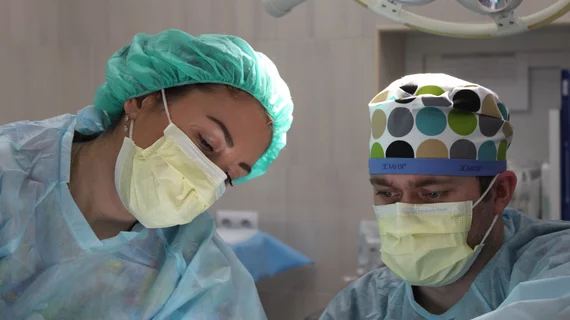How ITA harvesting techniques during CABG affect long-term outcomes
Survival rates are comparable for patients undergoing coronary artery bypass (CABG) surgery who receive skeletonized and pedicled internal thoracic arteries (ITAs), according to a new study published in JAMA Cardiology.
However, the findings suggest that the skeletonized ITA technique may be associated with a higher rate of adverse cardiovascular events after 10 years.
The study’s authors, noting that the skeletonized technique is “generally recommended to reduce the risk of sternal complications or allow more complex grafting strategies,” aimed to learn more about how the harvesting techniques can impact long-term outcomes. They turned to the Arterial Revascularization Trial (ART), which included data from 28 different facilities, to learn more.
“Because of the key role that the ITA plays in modern CABG surgery and the potentially important implications of the findings of an increased risk of graft failure and clinical events with the skeletonized technique, we performed an unplanned post hoc analysis of the ART—to our knowledge, the largest CABG trial with long-term follow-up to date—aimed at comparing the long-term clinical outcomes of patients who received skeletonized vs. pedicled ITAs,” wrote first author Mario Gaudino, MD, PhD, of the department of cardiothoracic surgery at Weill Cornell Medicine in New York City, and colleagues.
The team’s analysis included data from more than 2,100 patients. The median patient age was 65 years old, and vast majority (86.3%) were male. All patients were treated from June 2004 to December 2017. The pedicled ITA technique was used in more than 1,100 patients, and the skeletonized technique was used for all remaining patients.
After 10 years, the risk of all-cause mortality was “not significantly different” between the two groups. The rate of major adverse cardiac events (MACEs) or sternal wound complications (SWCs) after 10 years, however, was higher for the skeletonized ITA group (36%) than the pedicled ITA group (31%).
When only focusing on patients with a single ITA to the left anterior descending artery, the authors added, the same trends were still seen: comparable mortality rates, but more adverse outcomes among patients in the skeletonized ITA group.
Another key finding was that surgeons who cared for 50 or fewer patients included in the study were associated with a “significantly higher” long-term risk of MACEs or SWCs when using the skeletonized ITC technique. This difference was not as prominent, however, when only looking at surgeons who treated 51 or more patients included in the study.
“Further evaluation of the safety and effectiveness of the skeletonized technique, with particular regard to surgeon experience, is necessary,” the authors concluded.
The full analysis is available here.

